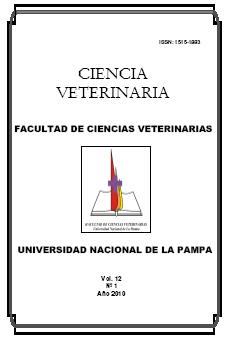Skin histological structure of South American camel
Keywords:
Skin, Cutaneous glands, CamelidaesAbstract
It was described the histological and cytological characteristics of the skin of the guanaco (Lama guanicoe), llama (L. glama), vicuna (V. vicugna) and crosses of guanaco and llama of first generation. Special attention was paid to aspects of the epidermis, hair follicles and glands. The epidermis is thick in the head and neck of guanaco, llama and crosses, and generally thin in inguinal, axillary regions and all across the skin of the vicuña. Hair follicles can occur in isolation or in groups, according to the skin area and species. When looking at these groups may consist of a large follicle or principal and various accessories. Primary follicles produce hair and accessory follicules can produce hair or wool fibers. The total number of follicles per unit area is highest in the vicuña. The sweat glands are numerous and deep location. They are mostly apocrine type. There is at least one per follicular group. The sebaceous glands are, in general, simple existing almost always a small unit in each hair follicle although some may not possess. They are located superficially and its secretion is holocrine. In individuals crossing guanaco and llama, intermediate values were observed, but generally close to those of the guanaco.Downloads
Downloads
Published
How to Cite
Issue
Section
License
Al momento de enviar sus contribuciones, los colaboradores deberán declarar , de manera fehaciente, que poseen el permiso del archivo o repositorio donde se obtuvieron los documentos que se anexan al trabajo, cualquiera sea su formato (manuscritos inéditos, imágenes, archivos audiovisuales, etc.), permiso que los autoriza a publicarlos y reproducirlos, liberando a la revista y sus editores de toda responsabilidad o reclamo de terceros , los autores deben adherir a la licencia Creative Commons denominada “Atribución - No Comercial CC BY-NC-SA”, mediante la cual el autor permite copiar, reproducir, distribuir, comunicar públicamente la obra y generar obras derivadas, siempre y cuando se cite y reconozca al autor original. No se permite, sin embargo, utilizar la obra con fines comerciales.



4.png)


7.png)



